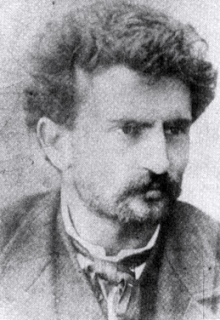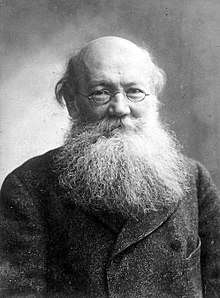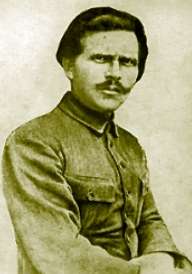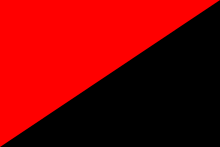Anarcho-communism
Anarcho-communism,[1][2][3][4][5] also referred to as anarchist communism,[6][7] communist anarchism,[8][9] free communism,[10] libertarian communism[11][12][13][14][15] and stateless communism,[16][17] is a political philosophy and anarchist school of thought which advocates the abolition of the state, capitalism, wage labour and private property (while retaining respect for personal property, along with collectively-owned items, goods and services)[18] in favor of common ownership of the means of production[19][20] and direct democracy as well as a horizontal network of workers' councils with production and consumption based on the guiding principle "From each according to his ability, to each according to his needs".[21][22] Some forms of anarcho-communism such as insurrectionary anarchism are strongly influenced by egoism and radical individualism, believing anarcho-communism to be the best social system for the realization of individual freedom.[23][24][25][26] Most anarcho-communists view anarcho-communism as a way of reconciling the opposition between the individual and society.[27][28][29][30][31]
| Part of a series on |
| Anarcho-communism |
|---|
 |
|
Concepts
|
|
Organizational forms |
|
Theoretical works
|
|
Anarcho-communism developed out of radical socialist currents after the French Revolution,[32][33] but it was first formulated as such in the Italian section of the First International.[34] The theoretical work of Peter Kropotkin took importance later as it expanded and developed pro-organizationalist and insurrectionary anti-organizationalist sections.[35] To date, the best-known examples of an anarcho-communist society (i.e. established around the ideas as they exist today and achieving worldwide attention and knowledge in the historical canon) are the anarchist territories during the Spanish Revolution[36] and the Free Territory during the Russian Revolution, where anarchists such as Nestor Makhno worked to create and defend anarcho-communism through the Revolutionary Insurrectionary Army of Ukraine from 1918 before being conquered by the Bolsheviks in 1921.[37]
In 1929, anarcho-communism was achieved in Korea by the Korean Anarchist Federation in Manchuria (KAFM) and the Korean Anarcho-Communist Federation (KACF), with help from anarchist general and independence activist Kim Chwa-chin, lasting until 1931, when Imperial Japan assassinated Kim and invaded from the south, while the Chinese Nationalists invaded from the north, resulting in the creation of Manchukuo, a puppet state of the Empire of Japan. Through the efforts and influence of the Spanish anarchists during the Spanish Revolution within the Spanish Civil War starting in 1936, anarcho-communism existed in most of Aragon, parts of the Levante and Andalusia as well as in the stronghold of anarchist Catalonia before being crushed in 1939 by the combined forces of the Francoist Nationalists (the regime that won the war), Nationalist allies such as Adolf Hitler and Benito Mussolini and even Spanish Communist Party repression (backed by the Soviet Union) as well as economic and armaments blockades from the capitalist states and the Spanish Republic itself governed by the Republicans.[38]
History
Early precursors
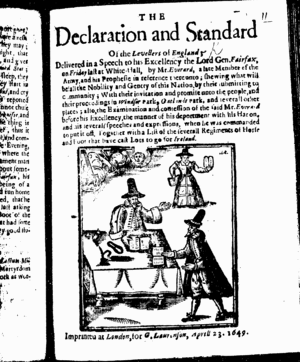
.png)

Anarcho-communist currents appeared during the English Civil War and the French Revolution of the 17th and 18th centuries, respectively. Gerrard Winstanley, who was part of the radical Diggers movement in England, wrote in his 1649 pamphlet The New Law of Righteousness that there "shall be no buying or selling, no fairs nor markets, but the whole earth shall be a common treasury for every man" and "there shall be none Lord over others, but every one shall be a Lord of himself".[39][32]
The Diggers themselves resisted tyranny of the ruling class and of kings, instead operating in a cooperative fashion in order to get work done, manage supplies, and increase economic productivity. Due to the communes established by the Diggers being free from private property, along with economic exchange (all items, goods and services were held collectively), their communes could be called early, functioning communist societies, spread out across the rural lands of England.
Prior to the Industrial Revolution, common ownership of land and property was much more prevalent across the European continent, but the Diggers were set apart by their struggle against monarchical rule. They sprung up by means of workers' self-management after the fall of Charles I.
In 1703, Louis Armand, Baron de Lahontan wrote the novel New Voyages to North America where he outlined how indigenous communities of the North American continent cooperated and organised. The author found the agrarian societies and communities of pre-colonial North America to be nothing like the monarchical, unequal states of Europe, both in their economic structure and lack of any state. He wrote that the life natives lived was "anarchy", this being the first usage of the term to mean something other than chaos.[40] He wrote that there were no priests, courts, laws, police, ministers of state, and no distinction of property, no way to differentiate rich from poor, as they were all equal and thriving cooperatively.[41]
During the French Revolution, Sylvain Maréchal, in his Manifesto of the Equals (1796), demanded "the communal enjoyment of the fruits of the earth" and looked forward to the disappearance of "the revolting distinction of rich and poor, of great and small, of masters and valets, of governors and governed".[42][32] Maréchal was critical not only of the unequal distribution of property, but how religion would often be used to justify evangelical immorality. He viewed the link between religion and what later came to be known as capitalism (though not in his time) as two sides of the same corrupted coin. He had once said, "Do not be afraid of your God - be afraid of yourself. You are the creator of your own troubles and joys. Heaven and hell are in your own soul".
Sylvain Maréchal was personally involved with the Conspiracy of the Equals, a failed attempt at overthrowing the monarchy of France and establishing a stateless, agrarian socialist utopia. He worked with Gracchus Babeuf in not only writing about what an anarchist country might look like, but how it will be achieved. The two of them were friends, though didn't always see eye to eye, particularly with Maréchal's statement on equality being more important than the arts.
Joseph Déjacque and the Revolutions of 1848
An early anarchist communist was Joseph Déjacque, the first person to describe himself as "libertarian".[43] Unlike Proudhon, he argued that, "it is not the product of his or her labor that the worker has a right to, but to the satisfaction of his or her needs, whatever may be their nature".[32][44] According to the anarchist historian Max Nettlau, the first use of the term libertarian communism was in November 1880, when a French anarchist congress employed it to more clearly identify its doctrines.[45] The French anarchist journalist Sébastien Faure, later founder and editor of the four-volume Anarchist Encyclopedia, started the weekly paper Le Libertaire (The Libertarian) in 1895.[46]
Déjacque "rejected Blanquism, which was based on a division between the 'disciples of the great people's Architect' and 'the people, or vulgar herd,' and was equally opposed to all the variants of social republicanism, to the dictatorship of one man and to 'the dictatorship of the little prodigies of the proletariat.' With regard to the last of these, he wrote that: 'a dictatorial committee composed of workers is certainly the most conceited and incompetent, and hence the most anti-revolutionary, thing that can be found [...] (It is better to have doubtful enemies in power than dubious friends)'. He saw 'anarchic initiative,' 'reasoned will' and 'the autonomy of each' as the conditions for the social revolution of the proletariat, the first expression of which had been the barricades of June 1848 (see Revolutions of 1848). In Déjacque's view, a government resulting from an insurrection remains a reactionary fetter on the free initiative of the proletariat. Or rather, such free initiative can only arise and develop by the masses ridding themselves of the 'authoritarian prejudices' by means of which the state reproduces itself in its primary function of representation and delegation. Déjacque wrote that: 'By government I understand all delegation, all power outside the people,' for which must be substituted, in a process whereby politics is transcended, the 'people in direct possession of their sovereignty,' or the 'organised commune.' For Déjacque, the communist anarchist utopia would fulfil the function of inciting each proletarian to explore his or her own human potentialities, in addition to correcting the ignorance of the proletarians concerning 'social science'".[35]
International Workingmen's Association
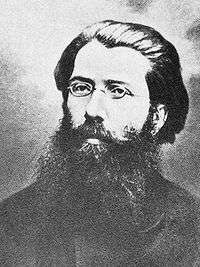
As a coherent, modern economic-political philosophy, anarcho-communism was first formulated in the Italian section of the First International by Carlo Cafiero, Emilio Covelli, Errico Malatesta, Andrea Costa and other ex Mazzinian republicans.[34] The collectivist anarchists advocated remuneration for the type and amount of labor adhering to the principle "to each according to deeds",[47] but they held out the possibility of a post-revolutionary transition to a communist system of distribution according to need. As Mikhail Bakunin's associate James Guillaume put it in his essay Ideas on Social Organization (1876): "When [...] production comes to outstrip consumption [...] everyone will draw what he needs from the abundant social reserve of commodities, without fear of depletion; and the moral sentiment which will be more highly developed among free and equal workers will prevent, or greatly reduce, abuse and waste".[48]
The collectivist anarchists sought to collectivize ownership of the means of production while retaining payment proportional to the amount and kind of labor of each individual, but the anarcho-communists sought to extend the concept of collective ownership to the products of labor as well. While both groups argued against capitalism, the anarchist communists departed from Proudhon and Bakunin, who maintained that individuals have a right to the product of their individual labor and to be remunerated for their particular contribution to production. However, Errico Malatesta stated that "instead of running the risk of making a confusion in trying to distinguish what you and I each do, let us all work and put everything in common. In this way each will give to society all that his strength permits until enough is produced for every one; and each will take all that he needs, limiting his needs only in those things of which there is not yet plenty for every one".[49]
In Anarchy and Communism (1880), Carlo Cafiero explains that private property in the product of labor will lead to unequal accumulation of capital and therefore the reappearance of social classes and their antagonisms; and thus the resurrection of the state: "If we preserve the individual appropriation of the products of labour, we would be forced to preserve money, leaving more or less accumulation of wealth according to more or less merit rather than need of individuals".[32] At the Florence Conference of the Italian Federation of the International in 1876, held in a forest outside Florence due to police activity, they declared the principles of anarcho-communism as follows:
The Italian Federation considers the collective property of the products of labour as the necessary complement to the collectivist programme, the aid of all for the satisfaction of the needs of each being the only rule of production and consumption which corresponds to the principle of solidarity. The federal congress at Florence has eloquently demonstrated the opinion of the Italian International on this point.
The above report was made in an article by Malatesta and Cafiero in the Swiss Jura Federation's bulletin later that year.
Peter Kropotkin
Peter Kropotkin (1842–1921), often seen as the most important theorist of anarchist communism, outlined his economic ideas in The Conquest of Bread and Fields, Factories and Workshops. Kropotkin felt that cooperation is more beneficial than competition, arguing in his major scientific work Mutual Aid: A Factor of Evolution that this was well-illustrated in nature. He advocated the abolition of private property (while retaining respect for personal property) through the "expropriation of the whole of social wealth" by the people themselves,[50] and for the economy to be co-ordinated through a horizontal network of voluntary associations[51] where goods are distributed according to the physical needs of the individual, rather than according to labor.[52] He further argued that these "needs," as society progressed, would not merely be physical needs but "[a]s soon as his material wants are satisfied, other needs, of an artistic character, will thrust themselves forward the more ardently. Aims of life vary with each and every individual; and the more society is civilized, the more will individuality be developed, and the more will desires be varied."[53] He maintained that in anarcho-communism "houses, fields, and factories will no longer be private property, and that they will belong to the commune or the nation and money, wages, and trade would be abolished".[54]
Individuals and groups would use and control whatever resources they needed, as the aim of anarchist communism was to place "the product reaped or manufactured at the disposal of all, leaving to each the liberty to consume them as he pleases in his own home".[55] He supported the expropriation of private property into the commons or public goods (while retaining respect for personal property) to ensure that everyone would have access to what they needed without being forced to sell their labour to get it, arguing:
We do not want to rob any one of his coat, but we wish to give to the workers all those things the lack of which makes them fall an easy prey to the exploiter, and we will do our utmost that none shall lack aught, that not a single man shall be forced to sell the strength of his right arm to obtain a bare subsistence for himself and his babes. This is what we mean when we talk of Expropriation [...].
— Peter Kropotkin, The Conquest of Bread[56]
He said that a "peasant who is in possession of just the amount of land he can cultivate" and "a family inhabiting a house which affords them just enough space [...] considered necessary for that number of people" and the artisan "working with their own tools or handloom" would not be interfered with,[57] arguing that "[t]he landlord owes his riches to the poverty of the peasants, and the wealth of the capitalist comes from the same source".[57]
In summation, Kropotkin described an anarchist communist economy as functioning like this:
Imagine a society, comprising a few million inhabitants, engaged in agriculture and a great variety of industries—Paris, for example, with the Department of Seine-et-Oise. Suppose that in this society all children learn to work with their hands as well as with their brains. Admit that all adults [...] bind themselves to work 5 hours a day from the age of twenty or twenty-two to forty-five or fifty, and that they follow occupations they have chosen in any one branch of human work considered necessary. Such a society could in return guarantee well-being to all its members; that is to say, a more substantial well-being than that enjoyed to-day by the middle classes. And, moreover, each worker belonging to this society would have at his disposal at least 5 hours a day which he could devote to science, art, and individual needs which do not come under the category of necessities, but will probably do so later on, when man's productivity will have augmented, and those objects will no longer appear luxurious or inaccessible.
— Peter Kropotkin, The Conquest of Bread[58]
Organizationalism vs. insurrectionarism and expansion
At the Berne conference of the International Workingmen's Association in 1876, the Italian anarchist Errico Malatesta argued that the revolution "consists more of deeds than words", and that action was the most effective form of propaganda. In the bulletin of the Jura Federation he declared "the Italian federation believes that the insurrectional fact, destined to affirm socialist principles by deed, is the most efficacious means of propaganda".[59]
As anarcho-communism emerged in the mid-19th century, it had an intense debate with Bakuninist collectivism and as such within the anarchist movement over participation in syndicalism and the workers movement as well as on other issues.[35] So "In the theory of the revolution" of anarcho-communism as elaborated by Peter Kropotkin and others "it is the risen people who are the real agent and not the working class organised in the enterprise (the cells of the capitalist mode of production) and seeking to assert itself as labour power, as a more 'rational' industrial body or social brain (manager) than the employers".[35]
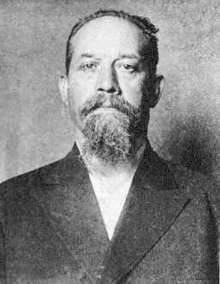
As a result, "between 1880 and 1890"[35] with the "perspective of an immanent revolution",[35] who was "opposed to the official workers' movement, which was then in the process of formation (general Social Democratisation). They were opposed not only to political (statist) struggles but also to strikes which put forward wage or other claims, or which were organised by trade unions."[35] But "While they were not opposed to strikes as such, they were opposed to trade unions and the struggle for the eight-hour day. This anti-reformist tendency was accompanied by an anti-organisational tendency, and its partisans declared themselves in favour of agitation amongst the unemployed for the expropriation of foodstuffs and other articles, for the expropriatory strike and, in some cases, for 'individual recuperation' or acts of terrorism."[35]
Even after Peter Kropotkin and others overcame their initial reservations and decided to enter labor unions,[35] there remained "the anti-syndicalist anarchist-communists, who in France were grouped around Sebastien Faure's Le Libertaire. From 1905 onwards, the Russian counterparts of these anti-syndicalist anarchist-communists become partisans of economic terrorism and illegal 'expropriations'."[35] Illegalism as a practice emerged and within it "[t]he acts of the anarchist bombers and assassins ("propaganda by the deed") and the anarchist burglars ("individual reappropriation") expressed their desperation and their personal, violent rejection of an intolerable society. Moreover, they were clearly meant to be exemplary, invitations to revolt."[60]
Proponents and activists of these tactics among others included Johann Most, Luigi Galleani, Victor Serge, Giuseppe Ciancabilla, and Severino Di Giovanni. The Italian Giuseppe Ciancabilla (1872–1904) wrote in "Against organization" that "we don't want tactical programs, and consequently we don't want organization. Having established the aim, the goal to which we hold, we leave every anarchist free to choose from the means that his sense, his education, his temperament, his fighting spirit suggest to him as best. We don't form fixed programs and we don't form small or great parties. But we come together spontaneously, and not with permanent criteria, according to momentary affinities for a specific purpose, and we constantly change these groups as soon as the purpose for which we had associated ceases to be, and other aims and needs arise and develop in us and push us to seek new collaborators, people who think as we do in the specific circumstance."[61]
By the 1880s, anarcho-communism was already present in the United States as can be seen in the publication of the journal Freedom: A Revolutionary Anarchist-Communist Monthly by Lucy Parsons and Lizzy Holmes.[62] Lucy Parsons debated in her time in the US with fellow anarcho-communist Emma Goldman over issues of free love and feminism.[62] Another anarcho-communist journal later appeared in the US called The Firebrand. Most anarchist publications in the US were in Yiddish, German, or Russian, but Free Society was published in English, permitting the dissemination of anarchist communist thought to English-speaking populations in the US.[63] Around that time these American anarcho-communist sectors entered in debate with the individualist anarchist group around Benjamin Tucker.[64] In February 1888 Berkman left for the United States from his native Russia.[65] Soon after his arrival in New York City, Berkman became an anarchist through his involvement with groups that had formed to campaign to free the men convicted of the 1886 Haymarket bombing.[66] He as well as Emma Goldman soon came under the influence of Johann Most, the best-known anarchist in the United States; and an advocate of propaganda of the deed—attentat, or violence carried out to encourage the masses to revolt.[67][68] Berkman became a typesetter for Most's newspaper Freiheit.[66]
According to anarchist historian Max Nettlau, the first use of the term "libertarian communism" was in November 1880, when a French anarchist congress employed it to more clearly identify its doctrines.[69] The French anarchist journalist Sébastien Faure started the weekly paper Le Libertaire (The Libertarian) in 1895.[46]
Methods of organising: platformism vs. synthesism
In Ukraine the anarcho-communist guerrilla leader Nestor Makhno led an independent anarchist army in Ukraine during the Russian Civil War. A commander of the peasant Revolutionary Insurrectionary Army of Ukraine, also known as the Anarchist Black Army, Makhno led a guerrilla campaign opposing both the Bolshevik "Reds" and monarchist "Whites". The revolutionary autonomous movement of which he was a part made various tactical military pacts while fighting various forces of reaction and organizing the Free Territory of Ukraine, an anarchist society, committed to resisting state authority, whether capitalist or Bolshevik.[70][71] After successfully repelling Austro-Hungarian, White, and Ukrainian Nationalist forces, the Makhnovists militia forces and anarchist communist territories in the Ukraine were eventually crushed by Bolshevik military forces.
In the Mexican Revolution the Mexican Liberal Party was established and during the early 1910s it led a series of military offensives leading to the conquest and occupation of certain towns and districts in Baja California with the leadership of anarcho-communist Ricardo Flores Magón.[72] Kropotkin's The Conquest of Bread, which Flores Magón considered a kind of anarchist bible, served as basis for the short-lived revolutionary communes in Baja California during the "Magónista" Revolt of 1911[72] During the Mexican Revolution Emiliano Zapata and his army and allies, including Pancho Villa, fought for agrarian reform in Mexico. Specifically, they wanted to establish communal land rights for Mexico's indigenous population, which had mostly lost its land to the wealthy elite of European descent. Zapata was partly influenced by Ricardo Flores Magón. The influence of Flores Magón on Zapata can be seen in the Zapatistas' Plan de Ayala, but even more noticeably in their slogan (this slogan was never used by Zapata) "Tierra y libertad" or "land and liberty", the title and maxim of Flores Magón's most famous work. Zapata's introduction to anarchism came via a local schoolteacher, Otilio Montaño Sánchez – later a general in Zapata's army, executed on May 17, 1917 – who exposed Zapata to the works of Peter Kropotkin and Flores Magón at the same time as Zapata was observing and beginning to participate in the struggles of the peasants for the land.
A group of exiled Russian anarchists attempted to address and explain the anarchist movement's failures during the Russian Revolution. They wrote the Organizational Platform of the General Union of Anarchists which was written in 1926 by Dielo Truda ("Workers' Cause"). The pamphlet is an analysis of the basic anarchist beliefs, a vision of an anarchist society, and recommendations as to how an anarchist organization should be structured. The four main principles by which an anarchist organization should operate, according to the Platform, are ideological unity, tactical unity, collective action, and federalism. The platform argues that "We have vital need of an organization which, having attracted most of the participants in the anarchist movement, would establish a common tactical and political line for anarchism and thereby serve as a guide for the whole movement".
The Platform attracted strong criticism from many sectors on the anarchist movement of the time including some of the most influential anarchists such as Voline, Errico Malatesta, Luigi Fabbri, Camillo Berneri, Max Nettlau, Alexander Berkman,[73] Emma Goldman and Gregori Maximoff.[74] Malatesta, after initially opposing the Platform, later came to agreement with the Platform confirming that the original difference of opinion was due to linguistic confusion: "I find myself more or less in agreement with their way of conceiving the anarchist organisation (being very far from the authoritarian spirit which the "Platform" seemed to reveal) and I confirm my belief that behind the linguistic differences really lie identical positions."[75]
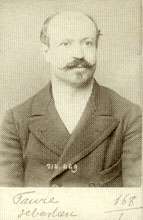
Two texts were made by the anarchist communists Sébastien Faure and Volin as responses to the Platform, each proposing different models, are the basis for what became known as the organisation of synthesis, or simply "synthesism".[76] Voline published in 1924 a paper calling for "the anarchist synthesis" and was also the author of the article in Sébastien Faure's Encyclopedie Anarchiste on the same topic.[77] The main purpose behind the synthesis was that the anarchist movement in most countries was divided into three main tendencies: communist anarchism, anarcho-syndicalism, and individualist anarchism[77] and so such an organization could contain anarchists of this three tendencies very well. Faure in his text "Anarchist synthesis" has the view that "these currents were not contradictory but complementary, each having a role within anarchism: anarcho-syndicalism as the strength of the mass organisations and the best way for the practice of anarchism; libertarian communism as a proposed future society based on the distribution of the fruits of labour according to the needs of each one; anarcho-individualism as a negation of oppression and affirming the individual right to development of the individual, seeking to please them in every way.[76] The Dielo Truda platform in Spain also met with strong criticism. Miguel Jimenez, a founding member of the Iberian Anarchist Federation (FAI), summarized this as follows: too much influence in it of marxism, it erroneously divided and reduced anarchists between individualist anarchists and anarcho-communist sections, and it wanted to unify the anarchist movement along the lines of the anarcho-communists. He saw anarchism as more complex than that, that anarchist tendencies are not mutually exclusive as the platformists saw it and that both individualist and communist views could accommodate anarchosyndicalism.[78] Sébastian Faure had strong contacts in Spain and so his proposal had more impact in Spanish anarchists than the Dielo Truda platform even though individualist anarchist influence in Spain was less strong than it was in France. The main goal there was conciling anarcho-communism with anarcho-syndicalism.[79]
Gruppo Comunista Anarchico di Firenze held that the during early twentieth century, the terms libertarian communism and anarchist communism became synonymous within the international anarchist movement as a result of the close connection they had in Spain (see Anarchism in Spain) (with libertarian communism becoming the prevalent term).[80]
Spanish Revolution of 1936
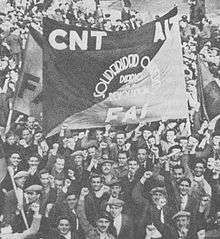
The most extensive application of anarcho-communist ideas (i.e. established around the ideas as they exist today and achieving worldwide attention and knowledge in the historical canon) happened in the anarchist territories during the Spanish Revolution.[38]
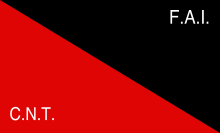
In Spain, the national anarcho-syndicalist trade union Confederación Nacional del Trabajo initially refused to join a popular front electoral alliance, and abstention by CNT supporters led to a right-wing election victory. In 1936, the CNT changed its policy and anarchist votes helped bring the popular front back to power. Months later, the former ruling class responded with an attempted coup causing the Spanish Civil War (1936–1939).[81] In response to the army rebellion, an anarchist-inspired movement of peasants and workers, supported by armed militias, took control of Barcelona and of large areas of rural Spain where they collectivised the land,[82][83] but even before the fascist victory in 1939 the anarchists were losing ground in a bitter struggle with the Stalinists, who controlled the distribution of military aid to the Republican cause from the Soviet Union. The events known as the Spanish Revolution was a workers' social revolution that began during the outbreak of the Spanish Civil War in 1936 and resulted in the widespread implementation of anarchist and more broadly libertarian socialist organizational principles throughout various portions of the country for two to three years, primarily Catalonia, Aragon, Andalusia, and parts of the Levante. Much of Spain's economy was put under worker control; in anarchist strongholds like Catalonia, the figure was as high as 75%, but lower in areas with heavy Communist Party of Spain influence, as the Soviet-allied party actively resisted attempts at collectivization enactment. Factories were run through worker committees, agrarian areas became collectivised and run as libertarian communes. Anarchist historian Sam Dolgoff estimated that about eight million people participated directly or at least indirectly in the Spanish Revolution,[84] which he claimed "came closer to realizing the ideal of the free stateless society on a vast scale than any other revolution in history".[85] Stalinist-led troops suppressed the collectives and persecuted both dissident Marxists and anarchists.[86]
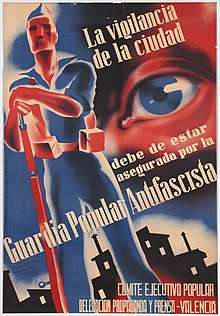
Although every sector of the stateless parts of Spain had undergone workers' self-management, collectivisation of agricultural and industrial production, and in parts using money or some degree of private property, a heavy regulation of markets by democratic communities, there were other areas throughout Spain that used no money at all, and followed principles in accordance with "From each according to his ability, to each according to his needs". One such example was the libertarian communist village of Alcora in the Valencian Community, where money was entirely absent, and distribution of properties and services was done based upon needs, not who could afford them. There was no distinction between rich and poor, and everyone held everything in common. Buildings that used to function as shops were made storehouses, where instead of buying and selling, which didn't exist in Alcora during the war, they were centers for distribution, where everyone took freely without paying. Labour was only conducted for enjoyment, with levels of productivity, quality of life, and general prosperity having dramatically risen after the fall of markets. Common ownership of property allowed for each inhabitant of the village to fulfil their needs without lowering themselves for the sake of profit, and each individual living in Alcora found themselves as ungoverned, anarchists free of rulers and private property.[87]
Post-war years
Anarcho-communism entered into internal debates once again over the issue of organization in the post-World War II era. Founded in October 1935 the Anarcho-Communist Federation of Argentina (FACA, Federación Anarco-Comunista Argentina) in 1955 renamed itself as the Argentine Libertarian Federation. The Fédération Anarchiste (FA) was founded in Paris on December 2, 1945, and elected the platformist anarcho-communist George Fontenis as its first secretary the next year. It was composed of a majority of activists from the former FA (which supported Voline's Synthesis) and some members of the former Union Anarchiste, which supported the CNT-FAI support to the Republican government during the Spanish Civil War, as well as some young Resistants. In 1950 a clandestine group formed within the FA called Organisation Pensée Bataille (OPB) led by George Fontenis.[88] The Manifesto of Libertarian Communism was written in 1953 by Georges Fontenis for the Federation Communiste Libertaire of France. It is one of the key texts of the anarchist-communist current known as platformism.[89] The OPB pushed for a move which saw the FA change its name into the Fédération Communiste Libertaire (FCL) after the 1953 Congress in Paris, while an article in Le Libertaire indicated the end of the cooperation with the French Surrealist Group led by André Breton. The new decision making process was founded on unanimity: each person has a right of veto on the orientations of the federation. The FCL published the same year the Manifeste du communisme libertaire. Several groups quit the FCL in December 1955, disagreeing with the decision to present "revolutionary candidates" to the legislative elections. On August 15–20, 1954, the Ve intercontinental plenum of the CNT took place. A group called Entente anarchiste appeared which was formed of militants who didn't like the new ideological orientation that the OPB was giving the FCL seeing it was authoritarian and almost marxist.[90] The FCL lasted until 1956 just after it participated in state legislative elections with 10 candidates. This move alienated some members of the FCL and thus produced the end of the organization.[88] A group of militants who didn't agree with the FA turning into FCL reorganized a new Federation Anarchiste which was established in December 1953.[88] This included those who formed L'Entente anarchiste who joined the new FA and then dissolved L'Entente. The new base principles of the FA were written by the individualist anarchist Charles-Auguste Bontemps and the non-platformist anarcho-communist Maurice Joyeux which established an organization with a plurality of tendencies and autonomy of groups organized around synthesist principles.[88] According to historian Cédric Guérin, "the unconditional rejection of Marxism became from that moment onwards an identity element of the new Federation Anarchiste" and this was motivated in a big part after the previous conflict with George Fontenis and his OPB.[88]
In Italy, the Italian Anarchist Federation was founded in 1945 in Carrara. It adopted an "Associative Pact" and the "Anarchist Program" of Errico Malatesta. It decided to publish the weekly Umanità Nova retaking the name of the journal published by Errico Malatesta. Inside the FAI, the Anarchist Groups of Proletarian Action (GAAP) was founded, led by Pier Carlo Masini, which "proposed a Libertarian Party with an anarchist theory and practice adapted to the new economic, political and social reality of post-war Italy, with an internationalist outlook and effective presence in the workplaces [...] The GAAP allied themselves with the similar development within the French Anarchist movement" as led by George Fontenis.[91] Another tendency which didn't identify either with the more classical FAI or with the GAAP started to emerge as local groups. These groups emphasized direct action, informal affinity groups and expropriation for financing anarchist activity.[92] From within these groups the influential insurrectionary anarchist Alfredo Maria Bonanno will emerge influenced by the practice of the Spanish exiled anarchist José Lluis Facerías.[92] In the early seventies a platformist tendency emerged within the Italian Anarchist Federation which argued for more strategic coherence and social insertion in the workers movement while rejecting the syntesist "Associative Pact" of Malatesta which the FAI adhered to. These groups started organizing themselves outside the FAI in organizations such as O.R.A. from Liguria which organized a Congress attended by 250 delegates of grupos from 60 locations. This movement was influential in the autonomia movements of the seventies. They published Fronte Libertario della lotta di classe in Bologna and Comunismo libertario from Modena.[93] The Federation of Anarchist Communists (Federazione dei Comunisti Anarchici), or FdCA, was established in 1985 in Italy from the fusion of the Organizzazione Rivoluzionaria Anarchica (Revolutionary Anarchist Organisation) and the Unione dei Comunisti Anarchici della Toscana (Tuscan Union of Anarchist Communists).
The International of Anarchist Federations (IAF/IFA) was founded during an international anarchist conference in Carrara in 1968 by the three existing European anarchist federations of France (Fédération Anarchiste), Italy (Federazione Anarchica Italiana) and Spain (Federación Anarquista Ibérica) as well as the Bulgarian federation in French exile. These organizations were also inspired on synthesist principles.[77]
Contemporary times
Libertarian Communism was a socialist journal founded in 1974 and produced in part by members of the Socialist Party of Great Britain.[94] The synthesist Italian Anarchist Federation and the platformist Federation of Anarchist Communists continue existing today in Italy but insurrectionary anarchism continues to be relevant as the recent establishment of the Informal Anarchist Federation shows.
In the 1970s, the French Fédération Anarchiste evolved into a joining of the principles of both synthesis anarchism and platformism[88] but later the platformist organizations Libertarian Communist Organization (France) in 1976 and Alternative libertaire in 1991 appeared with this last one existing until today alongside the synthesist Fédération Anarchiste. In recent times platformist organisations founded the now-defunct International Libertarian Solidarity network and its successor, the Anarkismo network; which is run collaboratively by roughly 30 platformist organisations around the world.
On the other hand, contemporary insurrectionary anarchism inherits the views and tactics of anti-organizational anarcho-communism[35][95] and illegalism.[96][97] The Informal Anarchist Federation (not to be confused with the synthesist Italian Anarchist Federation also FAI) is an Italian insurrectionary anarchist organization.[98] It has been described by Italian intelligence sources as a "horizontal" structure of various anarchist terrorist groups, united in their beliefs in revolutionary armed action. In 2003, the group claimed responsibility for a bomb campaign targeting several European Union institutions.[99][100]
Currently, alongside the previously mentioned federations, the International of Anarchist Federations includes the Argentine Libertarian Federation, the Anarchist Federation of Belarus, the Federation of Anarchists in Bulgaria, the Czech-Slovak Anarchist Federation, the Federation of German speaking Anarchists in Germany and Switzerland, and the Anarchist Federation in the United Kingdom and Ireland.[101]
Economic theory
The abolition of money, prices, and wage labor is central to anarchist communism. With distribution of wealth being based on self-determined needs, people would be free to engage in whatever activities they found most fulfilling and would no longer have to engage in work for which they have neither the temperament nor the aptitude.[31]
Anarcho-communists argue that there is no valid way of measuring the value of any one person's economic contributions because all wealth is a common product of current and preceding generations.[102] For instance, one could not measure the value of a factory worker's daily production without taking into account how transportation, food, water, shelter, relaxation, machine efficiency, emotional mood etc. contributed to their production. To truly give numerical economic value to anything, an overwhelming amount of externalities and contributing factors would need to be taken into account – especially current or past labor contributing to the ability to utilize future labor. As Kropotkin put it: "No distinction can be drawn between the work of each man. Measuring the work by its results leads us to absurdity; dividing and measuring them by hours spent on the work also leads us to absurdity. One thing remains: put the needs above the works, and first of all recognize the right to live, and later on, to the comforts of life, for all those who take their share in production.."[103]
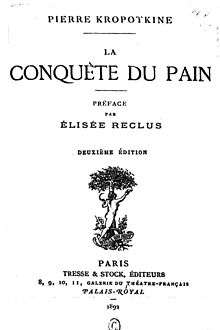
Communist anarchism shares many traits with collectivist anarchism, but the two are distinct. Collectivist anarchism believes in collective ownership while communist anarchism negates the entire concept of ownership in favor of the concept of usage.[104] Crucially, the abstract relationship of "landlord" and "tenant" would no longer exist, as such titles are held to occur under conditional legal coercion and are not absolutely necessary to occupy buildings or spaces (intellectual property rights would also cease, since they are a form of private property). In addition to believing rent and other fees are exploitative, anarcho-communists feel these are arbitrary pressures inducing people to carry out unrelated functions. For example, they question why one should have to work for 'X hours' a day to merely live somewhere. So instead of working conditionally for the sake of the wage earned, they believe in working directly for the objective at hand.[31]
Philosophical debates
Motivation
Anarchist communists reject the claim that wage labor is necessary because people are lazy and selfish by "human nature". They often point out that even the so-called "idle rich" sometimes find useful things to do despite having all their needs satisfied by the labour of others. Anarcho-communists generally do not agree with the belief in a pre-set "human nature", arguing that human culture and behavior is very largely determined by socialization and the mode of production. Many anarchist communists, like Peter Kropotkin, also believe that human evolutionary tendency is for humans to cooperate with each other for mutual benefit and survival instead of existing as lone competitors.[105]
While anarchist communists such as Peter Kropotkin and Murray Bookchin believed that the members of such a society would voluntarily perform all necessary labour because they would recognize the benefits of communal enterprise and mutual aid,[106] other anarchist communists such as Nestor Makhno and Ricardo Flores Magón argue that all those able to work in an anarchist communist society should be obligated to do so, excepting groups like children, the elderly, the sick, or the infirm.[107][108][109][110] Kropotkin did not think laziness or sabotage would be a major problem in an authentically anarchist-communist society, but he did agree that a freely associated anarchist commune could, and probably should, deliberately disassociate from those not fulfilling their communal agreement to do their share of work.[111] Peter Gelderloos, based on the Kibbutz, argues that motivation in a moneyless society would be found in the satisfaction of work, concern for community, competition for prestige and praise from other community members.[112]
Freedom, work and leisure
Anarchist communists support communism as a means for ensuring the greatest freedom and well-being for everyone, rather than only the wealthy and powerful. In this sense, anarchist communism is a profoundly egalitarian philosophy.
Anarchist communism as an anarchist philosophy is against hierarchy in all its forms.[113] Anarchist communists do not think that anyone has the right to be anyone else's master, or 'boss' as this is a concept of capitalism and the state and implies authority over the individual. Some contemporary anarchist communists and advocates of post-left anarchy, such as Bob Black, reject the concept of work altogether in favor of turning necessary subsistence tasks into voluntary free play.[31][114]
Kropotkin said that the main authoritarian mistakes in communist experiments of the past were their being based on "religious enthusiasm"[115] and the desire to live "as a family"[116] where the individual had to "submit to the dictates of a punctilious morality".[117] For him anarcho-communism should be based on the right of free association and disassociation for individuals and groups and on significantly lowering the number of hours each individual dedicates to necessary labor.[118] He says that "to recognise a variety of occupations as the basis of all progress and to organise in such a way that man may be absolutely free during his leisure time, whilst he may also vary his work, a change for which his early education and instruction will have prepared him—this can easily be put in practice in a Communist society—this, again, means the emancipation of the individual, who will find doors open in every direction for his complete development".[31][118]
Individualism and collectivism
Some anarcho-communists (and collectivist anarchists as well) reject individualism and collectivism as illusory concepts.[119] They argue that individuals sacrificing themselves for the "greater", or being ruled by the "community" or "society", is not possible because society is composed of individuals rather than being a cohesive unit separate from the individual, and argue that collective control over the individual is tyrannical and thus antithetical to anarchism.[120] Others, such as Lucien van der Walt and Michael Schmidt, argue that: "The anarchists did not [...] identify freedom with the right of everybody to do exactly what one pleased but with a social order in which collective effort and responsibilities—that is to say, obligations—would provide the material basis and social nexus in which individual freedom could exist." They argued that "genuine freedom and individuality could only exist in a free society" and that in contrast to "misanthropic bourgeois individualism" anarchism was based in "a deep love of freedom, understood as a social product, a deep respect for human rights, a profound celebration of humankind and its potential and a commitment to a form of society where a 'true individuality' was irrevocably linked to 'the highest communist socieability'".[31][121]
Egoist philosophical positions are important in anarcho-communist insurrectionary anarchism. In the early 20th century the Italian individualist anarchist Renzo Novatore advocated both revolution and anarcho-communism when he said "revolution is the fire of our will and a need of our solitary minds; it is an obligation of the libertarian aristocracy. To create new ethical values. To create new aesthetic values. To communalize material wealth. To individualize spiritual wealth."[24] From Stirnerist positions he also disrespected private property when he said that "[o]nly ethical and spiritual wealth" was "invulnerable. This is the true property of individuals. The rest no! The rest is vulnerable! And all that is vulnerable will be violated!"[24] This can also be seen in the contemporary writings of insurrectionary anarchism, as can be seen in the work of Wolfi Landstreicher, Alfredo Bonanno, and others.[122][123] Post-left anarcho-communist Bob Black, after analysing insurrectionary anarcho-communist Luigi Galleani's view on anarcho-communism, went as far as saying that "communism is the final fulfillment of individualism [...] The apparent contradiction between individualism and communism rests on a misunderstanding of both [...] Subjectivity is also objective: the individual really is subjective. It is nonsense to speak of 'emphatically prioritizing the social over the individual,' [...] You may as well speak of prioritizing the chicken over the egg. Anarchy is a 'method of individualization.' It aims to combine the greatest individual development with the greatest communal unity."[31][124]
On the article by Max Baginski called "Stirner: The Ego and His Own", published in the American anarchist magazine Mother Earth, there is the following affirmation: "Modern Communists are more individualistic than Stirner. To them, not merely religion, morality, family and State are spooks, but property also is no more than a spook, in whose name the individual is enslaved—and how enslaved! The individuality is nowadays held in far stronger bondage by property, than by the combined power of State, religion and morality [...] The prime condition is that the individual should not be forced to humiliate and lower himself for the sake of property and subsistence. Communism thus creates a basis for the liberty and Eigenheit of the individual. I am a Communist because I am an Individualist. Fully as heartily the Communists concur with Stirner when he puts the word take in place of demand—that leads to the dissolution of private property, to expropriation. Individualism and Communism go hand in hand."[125]
Property

Anarchist communists counter the capitalist conception that communal property can only be maintained by force and that such a position is neither fixed in nature[126] nor unchangeable in practice, citing numerous examples of communal behavior occurring naturally even within capitalist systems.[127] Anarchist communists call for the abolition of private property while maintaining respect for personal property. As such the prominent anarcho-communist Alexander Berkman maintained that "The revolution abolishes private ownership of the means of production and distribution, and with it goes capitalistic business. Personal possession remains only in the things you use. Thus, your watch is your own, but the watch factory belongs to the people. Land, machinery, and all other public utilities will be collective property, neither to be bought nor sold. Actual use will be considered the only title-not to ownership but to possession. The organization of the coal miners, for example, will be in charge of the coal mines, not as owners but as the operating agency. Similarly will the railroad brotherhoods run the railroads, and so on. Collective possession, cooperatively managed in the interests of the community, will take the place of personal ownership privately conducted for profit."[128]
An important difference between anarchist communism and Marxist communism is who the product of the worker's labor belongs to. Both ideologies believe that the product of labor does not belong to the capitalist due to it being produced by the worker and not the employer, however, there are slight differences between the opinions taken by anarchist communist Peter Kropotkin and Karl Marx. Marx stated that the product of the worker's labor belongs to the worker due to it being produced by the worker. In contrast, Kropotkin believed that the product of the worker's labor belongs to the community as a whole. Kropotkin argued that this was the case because the worker relied on the previous work of untold millions in to even begin his particular form of labor, and therefore, his work should belong to the community, since he benefited from the community.[129][130] This went on to providing the understanding, all belongs to all, because every virtue of the present was only made possible due to other peoples' efforts of the past.
Communes as an economic democracy
Anarcho-communism has been critical of a simple call for worker's ownership of workplaces and their administration as cooperatives. While not at odds with syndicalism as a tactic, it opposes the vision of anarcho-syndicalism as a theory, which sees a post-capitalist economy being made up of federations of industrial syndicates.
Anarcho-communism proposes that the future society be organised territorially through free communes (localities) instead of industrially through workers' unions (syndicates). Each commune is perceived as an integrated political-economic unit, removing the distinction between work and community, as well as existing as part of a wider communal-confederation made up of other such autonomous communes, linked together via voluntary contractual agreements. This is seen as overcoming the economic-centrism of more "workerist" forms of socialism which focus on the workplace alone as a site of struggle.
Murray Bookchin has put it this way:
But what of the syndicalist ideal of "collectivized" self-managed enterprises that are coordinated by like occupations on a national level and coordinated geographically by "collectives" on a local level? [...] Here, the traditional socialist criticism of this syndicalist form of economic management is not without its point: the corporate or private capitalist, "worker-controlled" or not—ironically, a technique in the repertoire of industrial management that is coming very much into vogue today as "workplace democracy" and "employee ownership" and constitutes no threat whatever to private property and capitalism [...] In any case, "economic democracy" has not simply meant "workplace democracy" and "employee ownership."
Many workers, in fact, would like to get away from their factories if they could and find more creative artisanal types of work, not simply "participate" in "planning" their own misery. What "economic democracy" meant in its profoundest sense was free, "democratic" access to the means of life, the counterpart of political democracy, that is, the guarantee of freedom from material want. It is a dirty bourgeois trick, in which many radicals unknowingly participate, that "economic democracy" has been re-interpreted as "employee ownership" and "workplace democracy" and has come to mean workers' "participation" in profit sharing and industrial management rather than freedom from the tyranny of the factory, rationalized labor, and "planned production," which is usually exploitative production with the complicity of the workers.[131]
Bookchin further argued:
Whereas the syndicalist alternative re-privatizes the economy into "self-managed" collectives and opens the way to their degeneration into traditional forms of private property—whether "collectively" owned or not—libertarian municipalism politicizes the economy and dissolves it into the civic domain. Neither factory or land appear as separate interests within the communal collective. Nor can workers, farmers, technicians, engineers, professionals, and the like perpetuate their vocational identities as separate interests that exist apart from the citizen body in face-to-face assemblies. "Property" is integrated into the commune as a material constituent of its libertarian institutional framework, indeed as a part of a larger whole that is controlled by the citizen body in assembly as citizens—not as vocationally oriented interest groups.[131]
The term communism in anarcho-communism should be taken to refer to a polity of communes as well as an economy of the commons.
Revolution and transition
According to platformist anarcho-communist Wayne Price:
Today's proposals for Parecon, in which workers are rewarded for the intensity and duration of their labor in a cooperative economy, would fit into Bakunin's or Marx's concept of a transitory, beginning, phase, of a free society. [...] Kropotkin rejected the two-phase approach of the Marxists and the anarchist-collectivists. Instead he proposed that a revolutionary society should "transform itself immediately into a communist society, that is, should go immediately into what Marx had regarded as the "more advanced", completed, phase of communism. Kropotkin and those who agreed with him called themselves "anarchist-communists" (or "communist anarchists"), although they continued to regard themselves as a part of the broader socialist movement.[132]
Leninists believe that without a transitional period of state control (their interpretation of the dictatorship of the proletariat), it would be impossible for any revolution to maintain the momentum or cohesion to defend the new society against external and internal threats. Friedrich Engels noted: "Without a previous social revolution the abolition of the state is nonsense; the abolition of capital is in itself the social revolution and involves a change in the whole method of production."[133] Alternatively, such quotations have been interpreted by anarcho-communists supportive of Marx and Engels to suggest the abolition of capitalism and the state simultaneously, not the creation of a new state. Anarchists reject the Marxist–Leninist model of the "dictatorship of the proletariat," arguing that any revolutionary minority taking over state power would be just as authoritarian as the ruling class in capitalism to defend the new state, and would eventually constitute itself as a new ruling class. As an extension of this, anarcho-communists counter-argue that decentralized, stateless collective federations are sufficient to give both power to workers and preserve personal freedom and point to the fact that no socialist state has ever showed signs of "withering away". The Spanish Revolution is cited as an example of successful anarchist military mobilization, albeit one crushed by superior forces.
Free association of communes as opposed to the nation-state
Anarcho-communism calls for a decentralized confederal form in relationships of mutual aid and free association between communes as an alternative to the centralism of the nation-state. Peter Kropotkin thus suggested:
Representative government has accomplished its historical mission; it has given a mortal blow to court-rule; and by its debates it has awakened public interest in public questions. But to see in it the government of the future socialist society is to commit a gross error. Each economic phase of life implies its own political phase; and it is impossible to touch the very basis of the present economic life—private property—without a corresponding change in the very basis of the political organization. Life already shows in which direction the change will be made. Not in increasing the powers of the State, but in resorting to free organization and free federation in all those branches which are now considered as attributes of the State.[134]
Kropotkin further argued:
[N]o community can hope to achieve economic autarchy, nor should it try to do so unless it wishes to become self-enclosed and parochial, not only "self-sufficient". Hence the confederation of communes "the Commune of communes" is reworked economically as well as politically into a shared universe of publicly managed resources. The management of the economy, precisely because it is a public activity, does not degenerate into privatized interactions between enterprises; rather it develops into confederalized interactions between municipalities. That is to say, the very elements of societal interaction are expanded from real or potential privatized components to institutionally real public components. Confederation becomes a public project by definition, not only because of shared needs and resources. If there is any way to avoid the emergence of the city-state, not to speak of self-serving bourgeois "cooperatives," it is through a municipalization of political life that is so complete that politics embraces not only what we call the public sphere but material means of life as well.[131]
Example societies through history
Early examples
There have been several attempts, both successful and unsuccessful, at creating other anarchist-communist societies throughout much of the world. Anarchist-communists and some green anarchists (especially anarcho-primitivists) argue that hunter-gatherer tribes, like families, were early forms of anarchist-communism due to their egalitarian nature.
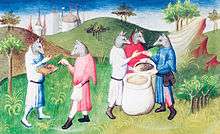
Both an ancient and modern day example of anarcho-communism being utilised by an isolated population would be by the hunter-gatherers of North Sentinel Island. North Sentinel Island is one of the Andaman Islands in the Bay of Bengal, occupied by the Sentinelese tribe who've inhabited the island for a least 60,000 years.[135] They practice a kind of primitive communism, where all property is held collectively by the community, and there exists no hierarchy between different members of the group. The workers, both male and female, control the means of production, as all materials found and collected go toward building small-scale structures for housing and storing of items. Though geographically close to the Indian Subcontinent, the Indian government doesn't disturb them, as they remain ungoverned. If North Sentinel Island could be called a country, it would be the last remaining anarchist country on the planet.[136] The Andaman Islands were often said to be inhabited by various tribes and factions, including humanoid wolves in clothing. These claims originate from French fiction, written to create curiosity for places people of Europe had never travelled.
Early Christian communities have also been described as having anarcho-communist characteristics.[137] Frank Seaver Billings described "Jesusism" as a combination of anarchism and communism.[138] Examples of later Christian egalitarian communities include the Diggers.
Gift economies and commons-based organising
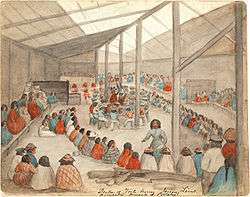
In anthropology and the social sciences, a gift economy (or gift culture) is a mode of exchange where valuable goods and services are regularly given without any explicit agreement for immediate or future rewards (i.e. no formal quid pro quo exists).[139] Ideally, voluntary and recurring gift exchange circulates and redistributes wealth throughout a community, and serves to build societal ties and obligations.[140] In contrast to a barter economy or a market economy, social norms and custom governs gift exchange, rather than an explicit exchange of goods or services for money or some other commodity.[141]
Traditional societies dominated by gift exchange were small in scale and geographically remote from each other. As states formed to regulate trade and commerce within their boundaries, market exchange came to dominate. Nonetheless, the practice of gift exchange continues to play an important role in modern society.[142] One prominent example is scientific research, which can be described as a gift economy.[143] Contrary to popular conception, there is no evidence that societies relied primarily on barter before using money for trade.[144] Instead, non-monetary societies operated largely along the principles of gift economics, and in more complex economies, on debt.[145][146] When barter did in fact occur, it was usually between either complete strangers or would-be enemies.[147]
The expansion of the Internet has witnessed a resurgence of the gift economy, especially in the technology sector. Engineers, scientists and software developers create open-source software projects. The Linux kernel and the GNU operating system are prototypical examples for the gift economy's prominence in the technology sector and its active role in instating the use of permissive free software and copyleft licenses, which allow free reuse of software and knowledge. Other examples include file-sharing, the commons and open access. Anarchist scholar Uri Gordon has argued:
The collaborative development of free software like the Linux operating system and applications such as OpenOffice clearly approximate an informational anarchist communism. Moreover, for anarchists it is precisely the logic of expropriation and electronic piracy that enables a radical political extension of the cultural ideals of the free manipulation, circulation and use of information associated with the "hacker ethic" (Himanen 2001). The space of illegality created by P2P (peer-to-peer) file-sharing opens up the possibility, not only of the open circulation of freely-given information and software as it is on the Internet today, but also of conscious copyright violation. The Internet, then, enables not only communist relations around information, but also the militant contamination and erosion of non-communist regimes of knowledge—a technological "weapon" to equalise access to information, eating away at intellectual property rights by rendering them unenforceable.[148]
The interest in such economic forms goes back to Peter Kropotkin, who saw in the hunter-gatherer tribes he had visited the paradigm of "mutual aid".[149] anarchist anthropologist David Graeber in his 2011 book Debt: The First 5000 Years argues that with the advent of the great Axial Age civilizations, the nexus between coinage and the calculability of economic values was concomitant with the disrupt of what Graeber calls "human economies," as found among the Iroquois, Celts, Inuit, Tiv, Nuer, and the Malagasy people of Madagascar among other groups which, according to Graeber, held a radically different conception of debt and social relations, based on the radical incalculability of human life and the constant creation and recreation of social bonds through gifts, marriages and general sociability. The author postulates the growth of a "military-coinage-slave complex" around this time, through which mercenary armies looted cities and human beings were cut from their social context to work as slaves in Greece, Rome and elsewhere in the Eurasian continent. The extreme violence of the period marked by the rise of great empires in China, India and the Mediterranean was, in this way, connected with the advent of large-scale slavery and the use of coins to pay soldiers, together with the obligation enforced by the State for its subjects to pay its taxes in currency. This was also the same time that the great religions spread out and the general questions of philosophical enquiry emerged on world history—many of those directly related, as in Plato's Republic, with the nature of debt and its relation to ethics.
Korean Anarchist Movement
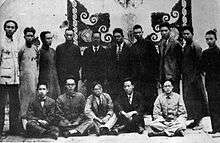
The Korean Anarchist Movement in Korea led by Kim Chwa-chin briefly brought anarcho-communism to Korea. The success was short-lived and much less widespread than the anarchism in Spain.[150] The Korean People's Association in Manchuria had established a stateless, classless society where all means of production were run and operated by the workers, and where all possessions were held in common by the community.

Urban communities
Trumbullplex, as an example of an anarchist community, operates to serve the common good through sheltering residents within a neighbourhood of Detroit, Michigan. This allows individuals who've previously gone into debt by means of rent to escape their economic burdens and join a democratic commune. The commune has served as a hangout for young members of the locality, alongside a place intended for teamwork and cooperative decision making.[151] This is often accompanied by music of the punk rock genre and frequent parties and celebrations thrown by Trumbullplex members. The commune has existed since 1993. Its current ideology, the same as its founding ideology, was to establish a settlement based on principles of mutual aid and the absence of hierarchy.[152][153]
Give-away shops
Give-away shops, free shops, or free stores, are stores where all goods are free. They are similar to charity shops, with mostly second-hand items—only everything is available at no cost. Whether it is a book, a piece of furniture, a garment or a household item, it is all freely given away, although some operate a one-in, one-out–type policy (swap shops). The free store is a form of constructive direct action that provides a shopping alternative to a monetary framework, allowing people to exchange goods and services outside of a money-based economy. The anarchist 1960s countercultural group The Diggers[154] opened free stores which simply gave away their stock, provided free food, distributed free drugs, gave away money, organized free music concerts, and performed works of political art.[155] The Diggers took their name from the original English Diggers led by Gerrard Winstanley[156] and sought to create a mini-society free of money and capitalism.[157] Although free stores have not been uncommon in the United States since the 1960s, the freegan movement has inspired the establishment of more free stores. Today the idea is kept alive by the new generations of social centres, anarchists and environmentalists who view the idea as an intriguing way to raise awareness about consumer culture and to promote the reuse of commodities.
See also
- Accumulation by dispossession
- Anarcho-communists (category)
- Autonomism
- Anarcho-syndicalism
- Consensus democracy
- Communalism
- Communization
- Council communism
- Democratic confederalism
- Direct democracy
- Free association (communism and anarchism)
- Free Territory
- Gift economy
- Insurrectionary anarchism
- Libertarian Communism
- Libertarian Marxism
- Libertarian socialism
- Makhnovism
- Neozapatismo
- Platformism
- Political views and activism of Rage Against the Machine
- Social anarchism
- Spanish Revolution of 1936
- Workers' council
References
- Kinna, Ruth (2012). The Bloomsbury Companion to Anarchism. Bloomsbury Academic. p. 329.
- Hodges, Donald C. (2014). Sandino's Communism: Spiritual Politics for the Twenty-First Century. "Introduction". p. 3. University of Texas Press.
- ÐropKick, Nickk (2014). Manifesto of a 21st Century Anarchist. Lulu. p. 136.
- Wetherly, Paul (2017). Political Ideologies. Oxford University Press. pp. 130, 137, 424.
- Iliopoulos, Christos (2019). Nietzsche & Anarchism: An Elective Affinity and a Nietzschean Reading of the December '08 Revolt in Athens. Vernon Press. p. 35.
- Bolloten, Burnett (1991). The Spanish Civil War: Revolution and Counterrevolution. UNC Press Books. p. 65. ISBN 978-0-8078-1906-7. Retrieved 25 March 2011.
- Price, Wayne (2002). "What is Anarchist Communism?". The Anarchist Library. Retrieved 4 August 2019.
- "The Schism Between Individualist and Communist Anarchism" by Wendy McElroy.
- "Anarchist communism is also known as anarcho-communism, communist anarchism, or, sometimes, libertarian communism". "Anarchist communism - an introduction" by Jacques Roux.
- Price, Wayne (2002). "What is Anarchist Communism?". The Anarchist Library. Retrieved 4 August 2019. "Instead, Kropotkin proposed that a large city, during a revolution, “could organize itself on the lines of free communism; the city guaranteeing to every inhabitant dwelling, food, and clothing...in exchange for...five hour’s work; and...all those things which would be considered as luxuries might be obtained by everyone if he joins for the other half of the day all sorts of free associations....” (p.p. 118–119)".
- According to anarchist historian Max Nettlau, the first use of the term "libertarian communism" was in November 1880, when a French anarchist congress employed it to more clearly identify its doctrines. Nettlau, Max (1996). A Short History of Anarchism. Freedom Press. p. 145. ISBN 978-0-900384-89-9.
- "Anarchist communism is also known as anarcho-communism, communist anarchism, or, sometimes, libertarian communism". "Anarchist communism - an introduction" by Libcom.org.
- "The terms libertarian communism and anarchist communism thus became synonymous within the international anarchist movement as a result of the close connection they had in Spain (with libertarian communism becoming the prevalent term)". "Anarchist Communism & Libertarian Communism" by Gruppo Comunista Anarchico di Firenze. from "L'informatore di parte", No.4, October 1979, quarterly journal of the Gruppo Comunista Anarchico di Firenze Archived 2017-10-18 at the Wayback Machine.
- "The 'Manifesto of Libertarian Communism' was written in 1953 by Georges Fontenis for the Federation Communiste Libertaire of France. It is one of the key texts of the anarchist-communist current". "Manifesto of Libertarian Communism" Archived 2019-10-23 at the Wayback Machine by Georges Fontenis.
- "In 1926 a group of exiled Russian anarchists in France, the Delo Truda (Workers' Cause) group, published this pamphlet. It arose not from some academic study but from their experiences in the 1917 Russian revolution". "The Organizational Platform of the Libertarian Communists" by Delo Truda.
- Wilczynski, J. (1981). An Encyclopedic Dictionary of Marxism, Socialism and Communism. Palgrave Macmillan. p. 293.
- Pengam, Alain. "Anarcho-Communism". In Ribel, Maximilien; Crump, John, eds. (1987). Non-Market Socialism in the Nineteenth and Twentieth Centuries. Palgrave Macmillan. p. 60.
- "The revolution abolishes private ownership of the means of production and distribution, and with it goes capitalistic business. Personal possession remains only in the things you use. Thus, your watch is your own, but the watch factory belongs to the people". Alexander Berkman. "What Is Communist Anarchism?" .
- Mayne, Alan James (1999). From Politics Past to Politics Future: An Integrated Analysis of Current and Emergent Paradigms. Greenwood Publishing Group. ISBN 978-0-275-96151-0. Retrieved 2010-09-20.
- Anarchism for Know-It-Alls By Know-It-Alls For Know-It-Alls, For Know-It-Alls. Filiquarian Publishing, LLC. January 2008. p. 14. ISBN 978-1-59986-218-7. Retrieved 2010-09-20.
- Fabbri, Luigi. "Anarchism and Communism." Northeastern Anarchist #4. 1922. 13 October 2002. .
- Makhno, Mett, Arshinov, Valevski, Linski (Dielo Trouda). "The Organizational Platform of the Libertarian Communists". 1926. Constructive Section: available here.
- Christopher Gray, Leaving the Twentieth Century, p. 88.
- "Towards the creative Nothing" by Renzo Novatore
- Post-left anarcho-communist Bob Black after analysing insurrectionary anarcho-communist Luigi Galleani's view on anarcho-communism went as far as saying that "communism is the final fulfillment of individualism...The apparent contradiction between individualism and communism rests on a misunderstanding of both...Subjectivity is also objective: the individual really is subjective. It is nonsense to speak of "emphatically prioritizing the social over the individual,"...You may as well speak of prioritizing the chicken over the egg. Anarchy is a "method of individualization." It aims to combine the greatest individual development with the greatest communal unity."Bob Black. Nightmares of Reason.
- "Modern Communists are more individualistic than Stirner. To them, not merely religion, morality, family and State are spooks, but property also is no more than a spook, in whose name the individual is enslaved - and how enslaved!...Communism thus creates a basis for the liberty and Eigenheit of the individual. I am a Communist because I am an Individualist. Fully as heartily the Communists concur with Stirner when he puts the word take in place of demand - that leads to the dissolution of property, to expropriation. Individualism and Communism go hand in hand". "Stirner: The Ego and His Own". Max Baginski. Mother Earth. Vol. 2. No. 3 May 1907.
- "Communism is the one which guarantees the greatest amount of individual liberty — provided that the idea that begets the community be Liberty, Anarchy...Communism guarantees economic freedom better than any other form of association, because it can guarantee wellbeing, even luxury, in return for a few hours of work instead of a day's work". "Communism and Anarchy" by Peter Kropotkin.
- "This other society will be libertarian communism, in which social solidarity and free individuality find their full expression, and in which these two ideas develop in perfect harmony". Organisational Platform of the Libertarian Communists by Dielo Truda (Workers' Cause).
- "I see the dichotomies made between individualism and communism, individual revolt and class struggle, the struggle against human exploitation and the exploitation of nature as false dichotomies and feel that those who accept them are impoverishing their own critique and struggle". "My Perspectives" Archived 2010-12-02 at the Wayback Machine by Willful Disobedience Vol. 2, No. 12.
- L. Susan Brown, The Politics of Individualism, Black Rose Books (2002).
- L. Susan Brown, "Does Work Really Work?".
- Robert Graham, Anarchism - A Documentary History of Libertarian Ideas - Volume One: From Anarchy to Anarchism (300CE to 1939), Black Rose Books, 2005
- "Chapter 41: The Anarchists" in The Great French Revolution 1789-1793 by Peter Kropotkin.
- Nunzio Pernicone, Italian Anarchism 1864–1892, pp. 111-113, AK Press 2009.
- "Anarchist-Communism" by Alain Pengam: "This inability to break definitively with collectivism in all its forms also exhibited itself over the question of the workers' movement, which divided anarchist-communism into a number of tendencies."
- "This process of education and class organization, more than any single factor in Spain, produced the collectives. And to the degree that the CNT-FAI (for the two organizations became fatally coupled after July 1936) exercised the major influence in an area, the collectives proved to be generally more durable, communist and resistant to Stalinist counterrevolution than other republican-held areas of Spain." Murray Bookchin. To Remember Spain: The Anarchist and Syndicalist Revolution of 1936]
- Skirda, Alexandre (2004). Nestor Makhno: Anarchy's Cossack. AK Press. pp. 86. 236–238.
- Murray Bookchin. To Remember Spain: The Anarchist and Syndicalist Revolution of 1936
- "The first Adam is the wisdom and power of flesh broke out and sate down in the chair of rule and dominion, in one part of mankind over another. And this is the beginner of particular interest, buying and selling the earth from one particular hand to another, saying, This is mine, upholding this particular propriety by a law of government of his own making, and thereby restraining other fellow creatures from seeking nourishment from their mother earth. So that though a man was bred up in a Land, yet he must not worke for himself where he would sit down. But from Adam; that is, for such a one that had bought part of the Land, or came to it by inheritance of his deceased parents, and called it his own Land: So that he that had no Land, was to work for those for small wages, that called the Land theirs; and thereby some are lifted up into the chair of tyranny, and others trod under the foot-stool of misery, as if the earth were made for a few, no for all men". Gerrard Winstanley (1649). The New Law of Righteousness.
- Louis Armand, Baron de Lahontan (1703). New Voyages to North America. "Preface". Library of the University of Illinois. p. 11. "This I only mention by the bye, in this my Preface to the Reader, whom I pray the Heavens to Crown with Profperity, in preferving him from having any bufinefs to adjufl with mofi of the Miniflers of State, and Priefts; for let them be never fo faulty, they'll flill be faid to be in the right, till fuch time as Anarchy be introduc'd amongft us, as well as the Americans, among whom the forrycfl fellow thinks himfelf a better Man, than a Chancellor of France. Thefe People are happy in being fcreen'd from the tricks and fliifts of Miniflers, who are always Maflers where-ever they come. I envy the fiate of a poor Savage, who tramples upon Laws, and pays Homage to no Scepter. I wish I could fpend the reft of my Life in his Hutt, and fo be no longer expos'd to the chagrin of bending the knee to a fet of Men, that facrifice the publick good to their private intereft, and are born to plague honeft Men".
- Louis Armand, Baron de Lahontan (1703). New Voyages to North America. "Introduction". Library of the University of Illinois. p. xxxv. "The vogue of the baron's book was immediate and widespread, and must have soon replenished his slender purse. In simple sentences, easily read and comprehended by the masses, Their Lahontan recounted not only his own adventures, and the important events that occurred beneath his eyes in the much-talked-of region of New France, but drew a picture of the simple delights of life in the wilderness, more graphic than had yet been presented to the European world. His idyllic account of manners and customs among the savages who dwelt in the heart of the American forest, or whose rude huts of bark or skin or matted reeds nestled by the banks of its far-reaching waterways, was a picture which fascinated the "average reader" in that romantic age, eager to learn of new lands and strange peoples. In the pages of Lahontan the child of nature was depicted as a creature of rare beauty of form, a rational being thinking deep thoughts on great subjects, but freed from the trammels and frets of civilization, bound by none of its restrictions, obedient only to the will and caprice of his own nature. In this American Arcady were no courts, laws, police, ministers of An American state, or other hampering paraphernalia of government; each man was a law unto himself, and did what seemed good in his own eyes. Here were no monks and priests, with their strictures and asceticisms, but a natural, sweetly-reasonable religion. Here no vulgar love of money pursued the peaceful native in his leafy home; without distinction of property, the rich man was he who might give most generously. Aboriginal marriage was no fettering life-covenant, but an arrangement pleasing the convenience of the contracting parties. Man, innocent and unadorned, passed his life in the pleasures of the chase, warring only in the cause of the nation, scorning the supposititious benefits of civilization, and free from its diseases, misery, sycophancy, and oppression. In short, the American wilderness was the seat of serenity and noble philosophy".
- "The Agrarian law, or the partitioning of land, was the spontaneous demand of some unprincipled soldiers, of some towns moved more by their instinct than by reason. We lean towards something more sublime and more just: the common good or the community of property! No more individual property in land: the land belongs to no one. We demand, we want, the common enjoyment of the fruits of the land: the fruits belong to all". Sylvain Maréchal (1796). Manifesto of the Equals. Marxist Internet Archive.
- Joseph Déjacque, De l'être-humain mâle et femelle - Lettre à P.J. Proudhon par Joseph Déjacque (in French)
- "l'Echange", article in Le Libertaire no 6, September 21, 1858, New York.
- Nettlau, Max (1996). A Short History of Anarchism. Freedom Press. p. 145. ISBN 978-0-900384-89-9.
- Nettlau, Max (1996). A Short History of Anarchism. Freedom Press. p. 162. ISBN 978-0-900384-89-9.
- Kropotkin, Peter. The Wages System. 1920. Also available here; quote: "Such, in a few words, is the organization which the Collectivists desire ... their principles are: collective property in the instruments of labor and remuneration of each worker according to the time spent in productive toil, taking into account the productiveness of his work."
- James Guillaume, Ideas on Social Organization.
- Malatesta, Errico. "A Talk About Anarchist Communism Between Two Workers". Archived 10 January 2010 at the Wayback Machine. Retrieved 5 August 2020.
- Peter Kropotkin, Words of a Rebel, p99.
- Peter Kropotkin, The Conquest of Bread, p145.
- Marshall Shatz, Introduction to Kropotkin: The Conquest of Bread and Other Writings, Cambridge University Press 1995, p. xvi "Anarchist communism called for the socialization not only of production but of the distribution of goods: the community would supply the subsistence requirements of each individual member free of charge, and the criterion, 'to each according to his labor' would be superseded by the criterion 'to each according to his needs.'"
- Peter Kropotkin, The Conquest of Bread Chapter IX The Need For Luxury
- Kropotkin, Peter Chapter 13 The Collectivist Wages System from The Conquest of Bread, G. P. Putnam's Sons, New York and London, 1906.
- The Place of Anarchism in the Evolution of Socialist Thought
- Kropotkin, Peter The Conquest Of Bread Chapter IV Archived 2007-03-01 at the Wayback Machine
- Kropotkin Act for yourselves. N. Walter and H. Becker, eds. (London: Freedom Press 1985) [pp. 104–5]
- Kropotkin, Peter The Conquest Of Bread Chapter VIII, Ways and Means
- "Propaganda by the deed" by Workers Solidarity No 55 published in October 1998
- ""The "illegalists" by Doug Imrie. From "Anarchy: a Journal Of Desire Armed", Fall-Winter, 1994-95". Recollectionbooks.com. 1954-08-28. Archived from the original on 2015-09-08. Retrieved 2010-09-20.
- "Against organization" by Giuseppe Ciancabilla Archived November 28, 2010, at the Wayback Machine. Retrieved 2010-06-10.
- "Lucy Parsons: Woman Of Will" at the Lucy Parsons Center
- "Free Society was the principal English-language forum for anarchist ideas in the United States at the beginning of the twentieth century." Emma Goldman: Making Speech Free, 1902–1909, p.551.
- "Tucker and other individualist anarchists argued in the pages of Liberty that anarchist communism was a misnomer because communism implied state authority and true anarchists were against all forms of authority, even the authority of small groups. To individualist anarchists, communistic anarchism, with its ideals of "to each according to need, from each according to ability," necessarily implied authority over others, because it did not privilege individual liberty as the highest virtue. But for anarchist communist, who saw economic freedom as central, individual liberty without food and shelter seemed impossible. Unlike the individualist tradition, whose ideas had had years of exposure through the English language anarchist press in America with the publication of The Word from 1872 to 1893 and Liberty from 1881 to 1908, communistic anarchism had not been advocated in any detail.""The Firebrand and the Forging of a New Anarchism: Anarchist Communism and Free Love" by Jessica Moran
- Avrich, Anarchist Portraits, p. 202.
- Pateman, p. iii.
- Walter, p. vii.
- Newell, p. vi.
- Nettlau, Max (1996). A Short History of Anarchism. Freedom Press. p. 145. ISBN 978-0-900384-89-9.
- Yekelchyk 2007, p 80.
- Charles Townshend; John Bourne; Jeremy Black (1997). The Oxford Illustrated History of Modern War. Oxford University Press. ISBN 978-0-19-820427-5.
- "The Magonista Revolt in Baja California Capitalist Conspiracy or Rebelion de los Pobres?" by Lawrence D. Taylor
- "Wooden shoes or platform shoes? on the organizational platform of the libertarian communists" by Bob Black
- — George Carlin. "J.3.4 Why do many anarchists oppose the "Platform"? on An Anarchist FAQ". Infoshop.org. Archived from the original on 7 October 2010. Retrieved 2010-09-20.
- Malatesta, On Collective Responsibility
- ""Especifismo and Synthesis/ Synthesism" by Felipe Corrêa". Anarkismo.net. 2009-12-22. Retrieved 2010-09-20.
- — Lorenzo Kom'boa Ervin. ""J.3.2 What are "synthesis" federations?" in An Anarchist FAQ". Infoshop.org. Archived from the original on 7 October 2010. Retrieved 2010-09-20.
- "Jiménez evitó ahondar demasiado en sus críticas hacia la naturaleza abiertamente marxista de algunas partes de la Plataforma, limitándose a aludir a la crítica de Santillán en La Protesta, que afirmaba que los rusos no habían sido el único grupo responsable de permitir la infiltración de las ideas marxistas, lo que iba claramente dirigido a los sindicalistas de España17. Jiménez aceptó que la Plataforma había sido un intento encomiable de resolver el eterno problema de la desunión dentro de las filas anarquistas, pero consideraba que el programa ruso tenía sus defectos. La Plataforma se basaba en una premisa errónea sobre la naturaleza de las tendencias dentro del movimiento anarquista: dividía a los anarquistas en dos grupos diferentes, individualistas y comunistas, y con ello rechazaba la influencia de los primeros y proponía la unificación del movimiento anarquista en torno a la ideas de los segundos. Jiménez afirmaba que la realidad era mucho más compleja: esas diferentes tendencias dentro del movimiento anarquista no eran contradictorias ni excluyentes. Por ejemplo, era posible encontrar elementos en ambos grupos que apoyaran las tácticas del anarcosindicalismo. Por tanto, rechazaba el principal argumento de los plataformistas según el cual las diferentes tendencias se excluían entre sí." Jason Garner. "La búsqueda de la unidad anarquista: la Federación Anarquista Ibérica antes de la II República." Archived 2012-10-31 at the Wayback Machine
- "Debido a sus contactos e influencia con el movimiento del exilio español, la propuesta de Faure arraigó más en los círculos españoles que la Plataforma, y fue publicada en las prensas libertarias tanto en España como en Bélgica25. En esencia, Faure intentaba reunir a la familia anarquista sin imponer la rígida estructura que proponía la Plataforma, y en España se aceptó así. Opuesta a la situación de Francia, en España la influencia del anarquismo individualista no fue un motivo serio de ruptura. Aunque las ideas de ciertos individualistas como Han Ryner y Émile Armand tuvieron cierto impacto sobre el anarquismo español, afectaron sólo a aspectos como el sexo y el amor libre."Jason Garner. "La búsqueda de la unidad anarquista: la Federación Anarquista Ibérica antes de la II República." Archived 2012-10-31 at the Wayback Machine
- "Anarchist Communism & Libertarian Communism" Archived 2017-10-18 at the Wayback Machine by Gruppo Comunista Anarchico di Firenze. from "L'informatore di parte", No. 4, October 1979, quarterly journal of the Gruppo Comunista Anarchico di Firenze, on Libcom.org
- Beevor, Antony (2006). The Battle for Spain: The Spanish Civil War 1936–1939. London: Weidenfeld & Nicolson. p. 46. ISBN 978-0-297-84832-5.
- Bolloten, Burnett (1984-11-15). The Spanish Civil War: Revolution and Counterrevolution. University of North Carolina Press. p. 1107. ISBN 978-0-8078-1906-7.
- Bolloten, Burnett (1984-11-15). The Spanish Civil War: Revolution and Counterrevolution. University of North Carolina Press. p. 1107. ISBN 978-0-8078-1906-7.
- Dolgoff, S. (1974), The Anarchist Collectives: Workers' Self-Management in the Spanish Revolution, ISBN 978-0-914156-03-1
- Dolgoff (1974), p. 5
- Birchall, Ian (2004). Sartre Against Stalinism. Berghahn Books. p. 29. ISBN 978-1-57181-542-2.
- Anarchy #5, July, 1961 - A Peasant Experiment, Hanns-Erich Kaminski. p. 156–158.
- Cédric Guérin. "Pensée et action des anarchistes en France : 1950-1970"
- "Manifesto of Libertarian Communism" Archived 2019-10-23 at the Wayback Machine by Georges Fontenis, on Libcom.org
- "Si la critique de la déviation autoritaire de la FA est le principal fait de ralliement, on peut ressentir dès le premier numéro un état d'esprit qui va longtemps coller à la peau des anarchistes français. Cet état d'esprit se caractérise ainsi sous une double forme : d'une part un rejet inconditionnel de l'ennemi marxiste, d'autre part des questions sur le rôle des anciens et de l'évolution idéologique de l'anarchisme. C'est Fernand Robert qui attaque le premier : "Le LIB est devenu un journal marxiste. En continuant à le soutenir, tout en reconnaissant qu'il ne nous plaît pas, vous faîtes une mauvaise action contre votre idéal anarchiste. Vous donnez la main à vos ennemis dans la pensée. Même si la FA disparaît, même si le LIB disparaît, l'anarchie y gagnera. Le marxisme ne représente plus rien. Il faut le mettre bas; je pense la même chose des dirigeants actuels de la FA. L'ennemi se glisse partout." Cédric Guérin. "Pensée et action des anarchistes en France : 1950-1970"
- Masini, Pier Carlo, 1923-1998
- "Vivir la Anarquía .Artículo en solidaridad con Alfredo Bonanno y Christos Stratigopoulos". Archived from the original on 2015-08-28. Retrieved 2015-08-11.
- "Autonomía de las luchas y movimiento anárquico. La crisis de una democracia parlamentarista" (in Spanish). Bicicleta. Archived from the original on 2013-10-12. Retrieved 2013-08-31.
- "papers relating to Libertarian Communism (a splinter group of the SPGB) including journals and miscellaneous correspondence, 1970–1980 (1 box)""Socialist Party of Great Britain" at Archives Hub at the Great Research Centre
- "Say you want an insurrection" by Crimethinc Archived 2016-10-13 at the Wayback Machine
- "Anarchism, insurrections and insurrectionalism" by Joe Black Archived 2010-12-06 at the Wayback Machine
- "Some insurrectionists see precedents in the propaganda of the deed carried out by Nineteenth-century assassins and the illegalism associated with Jules Bonnot and his fellow bank robbers. We can trace the lineage of current insurrectionist theory from Errico Malatesta and Luigi Galleani"Archived 2016-10-13 at the Wayback Machine "Say you want an insurrection" by Crimethinc
- "MIPT Terrorism Knowledge Base". Archived from the original on 2010-06-04. Retrieved 2012-11-13.
- "Bologna mail blocked after bombs". BBC News. 31 December 2003.
- "Italy acts over EU letter bombs". CNN. 31 December 2003.
- "IFA-IAF pagina oficial". Archived from the original on 2016-08-08. Retrieved 2016-08-08.
- Alexander Berkman. What Is Communist Anarchism?
- Kropotkin, Peter. "The Collectivist Wage System". The Conquest of Bread, G. P. Putnam's Sons, New York and London, 1906, Chapter 13, Section 4
- Alexander Berkman. What is Anarchism?, p. 217
- Peter Kropotkin Mutual Aid: A Factor in Evolution
-
- Kropotkin, Peter Mutual Aid: A Factor of Evolution, 1998 paperback, London: Freedom Press. ISBN 0-900384-36-0, also at Project Gutenberg and at Wikisource
- Kropotkin, Peter The Conquest of Bread, first published 1892, also at Anarchy Archives and at Wikisource
- Kropotkin, Peter Fields, Factories and Workshops, available at Anarchy Archives and at Wikisource
- Bookchin, Murray Post Scarcity Anarchism (1971 and 2004) ISBN 1-904859-06-2.
- Dielo Trouda Editorial Group. "Supplement to the Organizational Platform (Questions and Answers)". 2 November 1926. "Supplement to the Organizational Platform (Questions and Answers)"
- Puente, Isaac. "Libertarian Communism". 1932. The Cienfuegos Press Anarchist Review #6. Orkney. English Translation 1982. Also available at: http://flag.blackened.net/liberty/libcom.html Archived 2010-01-06 at the Wayback Machine
- Berneri, Camilo. "The Problem of Work". pp. 59–82, Why Work?. Vernon Richards (ed.). p. 74
- Flores, Magón; Rivera, Librado; Figueroa, Anselmo; Magon, Enrique Flores. "Manifesto". 23 September 1911. Dreams of Freedom: A Ricardo Flores Magón Reader. Chaz Bufe and Mitchell Cowen Verter (ed.) 2005. pp. 139, 141 and 144
- Kropotkin, Peter The Conquest of Bread, Ch. 12, Objections, first published 1892.
- Gelderloos, Peter (2010). Anarchy Works.
- "...whatever else may be said, this much is for sure: the welfare of humanity, which the future can and will bring, lies in communism. It excludes in logical ways all authority and servitude, and therefore equals anarchy." "Anarchist Communism" by Johann Most
- Bob Black. "The Abolition Of Work". Deoxy.org. Archived from the original on 20 September 2010. Retrieved 20 September 2010.
- "nearly all communities were founded by an almost religious wave of enthusiasm. People were asked to become "pioneers of humanity;" to submit to the dictates of a punctilious morality, to become quite regenerated by Communist life, to give all their time, hours of work and of leisure, to the community, to live entirely for the community. This meant acting simply like monks and to demand — without any necessity — men to be what they are not."Peter Kropotkin. "Communism and Anarchy"
- "The second mistake lay in the desire to manage the community after the model of a family, to make it "the great family" They lived all in the same house and were thus forced to continuously meet the same "brethren and sisters." It is already difficult often for two real brothers to live together in the same house, and family life is not always harmonious; so it was a fundamental error to impose on all the "great family" instead of trying, on the contrary, to guarantee as much freedom and home life to each individual." Peter Kropotkin. "Communism and Anarchy"
- "Peter Kropotkin". RevoltLib.com. 13 January 2017.
- Kropotkin, Peter (1901). "Communism and Anarchy". Retrieved 2016-09-18.
- "A.2 What does anarchism stand for?".
- The Place of Anarchism in the Evolution of Socialist Thought, pp 14–15
- Schmidt, Michael and van der Walt, Lucien. Black Flame: The Revolutionary Class Politics of Anarchism and Syndicalism (Counter-Power vol 1). I. AK Press, 2009, Page 48
- The Theory of the Individual: Stirner's Savage Thought. Theanarchistlibrary.org. 1998-08-20. Retrieved 2010-09-20.
- ""At Daggers Drawn with the Existent, its Defenders and its False Critics" by anonymous". Theanarchistlibrary.org. 1905-12-11. Retrieved 2010-09-20.
- Bob Black, Nightmares of Reason.
- Max Baginski. "Stirner: The Ego and His Own" on Mother Earth. Vol. 2. No. 3 MAY, 1907
- Kropotkin, Peter. Mutual Aid.
- Colin Ward. Anarchism in Action.
- Alexander Berkman. "What Is Communist Anarchism?"
- Priestland, David (2015). The Conquest of Bread. Kropotkin, Peter (This edition, using the 1913 text, first published in Penguin Classics in 2015 ed.). London. pp. Introduction. ISBN 9780141396118. OCLC 913790063.
- Kropotkin, Petr Alekseevich (2015). The Conquest of Bread. Priestland, David (This edition, using the 1913 text, first published in Penguin Classics in 2015 ed.). London: Penguin Classics. ISBN 9780141396118. OCLC 913790063.
- "Municipalization: Community Ownership of the Economy" by Murray Bookchin
- "What is Anarchist Communism?" by Wayne Price
- "Letter from Engels to Theodore Cuno". Friedrich Engels. 1872. Archived from the original on September 26, 2006. Retrieved 2009-11-07.
- Kropotkin. "Anarchist Communism: Its Basis and Principles"
- Know how 60,000 year-old human tribe of secluded North Sentinel Island behaves with outsiders (November, 2018). timestravel.
- Pandya, Vishvajit (2009). "Through Lens and Text: Constructions of a 'Stone Age' Tribe in the Andaman Islands". History Workshop Journal. 67 (67): 173–193. doi:10.1093/hwj/dbn081. JSTOR 40646218. PMID 19824229.
- Hinson, E. Glenn. The Early Church: Origins to the Dawn of the Middle Ages, (1996) pp 42–3
- Frank S. Billings (1894). How shall the rich escape?. Arena Publishing. pp. 42 and 43.
Jesusism, which is Communism, and not Christianity at all as the world accepts it...Jesusism is unadulterated communism, with a most destructive anarchistic tendency
- Cheal, David J (1988). The Gift Economy. New York: Routledge. pp. 1–19. ISBN 978-0415006415. Retrieved 2009-06-18.
- Bollier, David. "The Stubborn Vitality of the Gift Economy." Silent Theft: The Private Plunder of Our Common Wealth. First Printing ed. New York: Routledge, 2002. 38–39. Print.
- R. Kranton: Reciprocal exchange: a self-sustaining system, American Economic Review, V. 86 (1996), Issue 4 (September), pp. 830–51
- Lewis Hyde: The Gift: Imagination and the Erotic Life of Property
- Hagstrom, Warren (1982). "Gift giving as an organizing principle in science". In Barry Barnes and David Edge. Science in Context: Readings in the Sociology of Science. MIT Press (Cambridge, MA).
- Mauss, Marcel. 'The Gift: The Form and Reason for Exchange in Archaic Societies.' pp. 36–37.
- "What is Debt? – An Interview with Economic Anthropologist David Graeber". Naked Capitalism. 26 August 2011.
- David Graeber: Debt: The First 5000 Years, Melville 2011. Cf. "Archived copy". Archived from the original on 2011-12-10. Retrieved 2012-11-21.CS1 maint: archived copy as title (link)
- Graeber, David. 'Toward an Anthropological Theory of Value'. pp. 153–154.
- Uri Gordon. Anarchism and Political Theory: Contemporary Problems
- Mutual Aid: A Factor of Evolution (1955 paperback (reprinted 2005), includes Kropotkin's 1914 preface, Foreword and Bibliography by Ashley Montagu, and The Struggle for Existence, by Thomas H. Huxley ed.). Boston: Extending Horizons Books, Porter Sargent Publishers. ISBN 0-87558-024-6. Project Gutenberg e-text, Project LibriVox audiobook
- "Korean Anarchism History". dwardmac.pitzer.edu. Retrieved 2016-03-19.
- Detroit sides with anarchists over developer in land bid (June, 2016). Detroit Free Press.
- Trumbullplex turns 25 and we're all invited to celebrate (August, 2018). Metro Times.
- Osborne, Domenique (2002-11-09). "Radically wholesome". Metro Times. Retrieved 2007-12-17.
- John Campbell McMillian; Paul Buhle (2003). The new left revisited. Temple University Press. p. 112. ISBN 978-1-56639-976-0. Retrieved 2011-12-28.
- Lytle, Mark Hamilton (2005). America's Uncivil Wars: The Sixties Era from Elvis to the Fall of Richard Nixon. Oxford University Press. pp. 213, 215. ISBN 978-0-19-029184-6.
- "Overview: who were (are) the Diggers?". The Digger Archives. Retrieved 2007-06-17.
- Gail Dolgin; Vicente Franco (2007). American Experience: The Summer of Love. PBS. Retrieved 2007-04-23.
Further reading
- Alexander Berkman, What is Communist Anarchism?, Prison Memoirs of an Anarchist, others.
- Murray Bookchin Post Scarcity Anarchism (1971 and 2004). ISBN 1-904859-06-2.
- Carlo Cafiero. Revolution. Black Cat Press. ISBN 978-1-926878-11-9.
- Luigi Fabbri Anarchism and Communism
- Federazione dei Comunisti Anarchici, Anarchist Communists: A Question Of Class, others
- Ricardo Flores Magón Dreams of Freedom: A Ricardo Flores Magón Reader. Chaz Bufe and Mitchell Cowen Verter (ed.) 2005.
- Georges Fontenis. Manifesto of Libertarian Communism
- Luigi Galleani. Anarchy Will Be!: Selected Writings Of Luigi Galleani. AK Press. 2007. ISBN 978-1-904859-29-1.
- Emma Goldman, Anarchism and Other Essays, Living My Life, others.
- Robert Graham, Anarchism: A Documentary History of Libertarian Ideas, Volume 1: From Anarchy to Anarchism (300CE-1939) ("Table Of Contents". Blackrosebooks.net. Retrieved 2010-09-20.) contains extensive selections from the anarchist communists, including Joseph Déjacque, Carlo Cafiero, Peter Kropotkin, Luigi Galleani, Errico Malatesta, Charlotte Wilson, Ricardo Flores Magón, Shifu, Hatta Shuzo, Alexander Berkman, Voline, and Isaac Puente.
- Peter Kropotkin Mutual Aid: A Factor of Evolution, 1998 paperback, London: Freedom Press. ISBN 0-900384-36-0, also at Project Gutenburg
- Peter Kropotkin The Conquest of Bread, first published 1892, also at Anarchy Archives
- Peter Kropotkin Fields, Factories and Workshops, available at Anarchy Archives
- Peter Kropotkin Anarchist Communism: Its Basis and Ideals
- Peter Kropotkin Communism and Anarchy
- Makhno, Mett, Arshinov, Valevski, Linski, The Organizational Platform of the Libertarian Communists (available in: Castellano, čeština, Deutsch, English, Έλληνικά, Français, Italiano, Ivrit, Magyar, Nederlands, Polska, Português, Pyccкий, Svenska, Türkçe, Македонски).
- Errico Malatesta A Talk About Anarchist Communism Between Two Workers
- Jessica Moran. "The Firebrand and the Forging of a New Anarchism: Anarchist Communism and Free Love."
- Johann Most. "Anarchist Communism"
- Alain Pengam. Anarchist-Communism
- Isaac Puente Libertarian Communism
- Ilan Shalif. GLIMPSES INTO THE YEAR 2100 (50 years after the revolution) Daily life in the libertarian communist society
- Michael Schmidt and Lucien van der Walt. Black Flame: The Revolutionary Class Politics of Anarchism and Syndicalism. AK Press. 2009.
- The Rise and Fall of The Green Mountain Anarchist Collective, 2015.
External links
- Anarkismo.net – anarchist communist news maintained by platformist organizations with discussion and theory from across the globe
- libcom.org – the home of anarchism and libertarian communism in the United Kingdom
- Anarchocommunism texts at The Anarchist Library
- Kropotkin: The Coming Revolution – short documentary to introduce the idea of anarcho-communism in Peter Kropotkin's own words
- Anarcho-communist theorists archives

